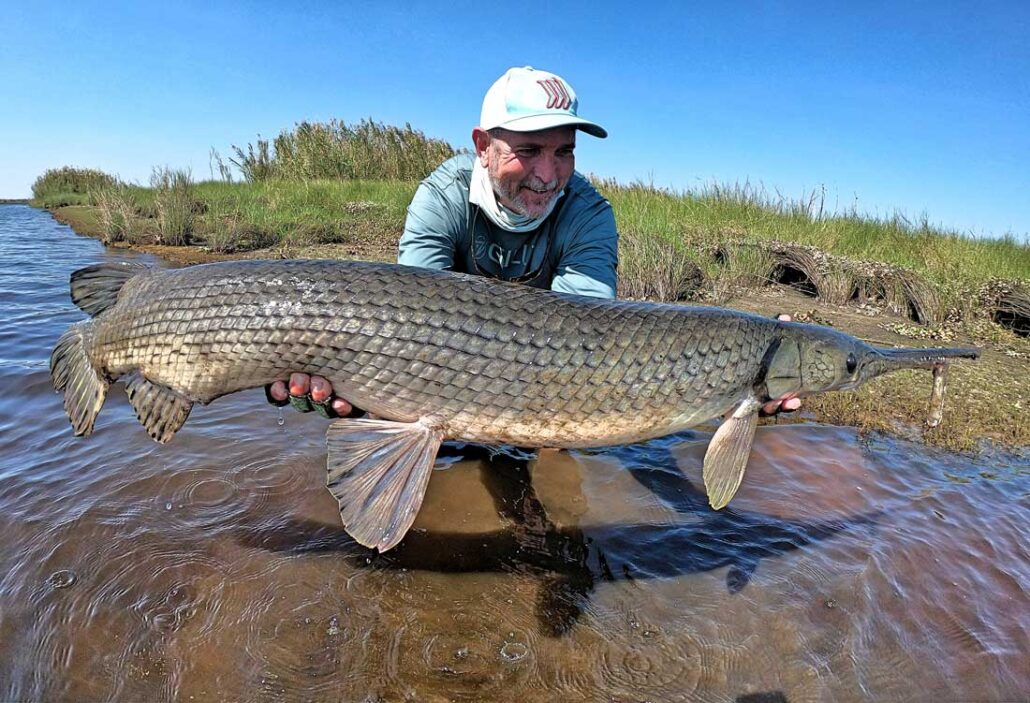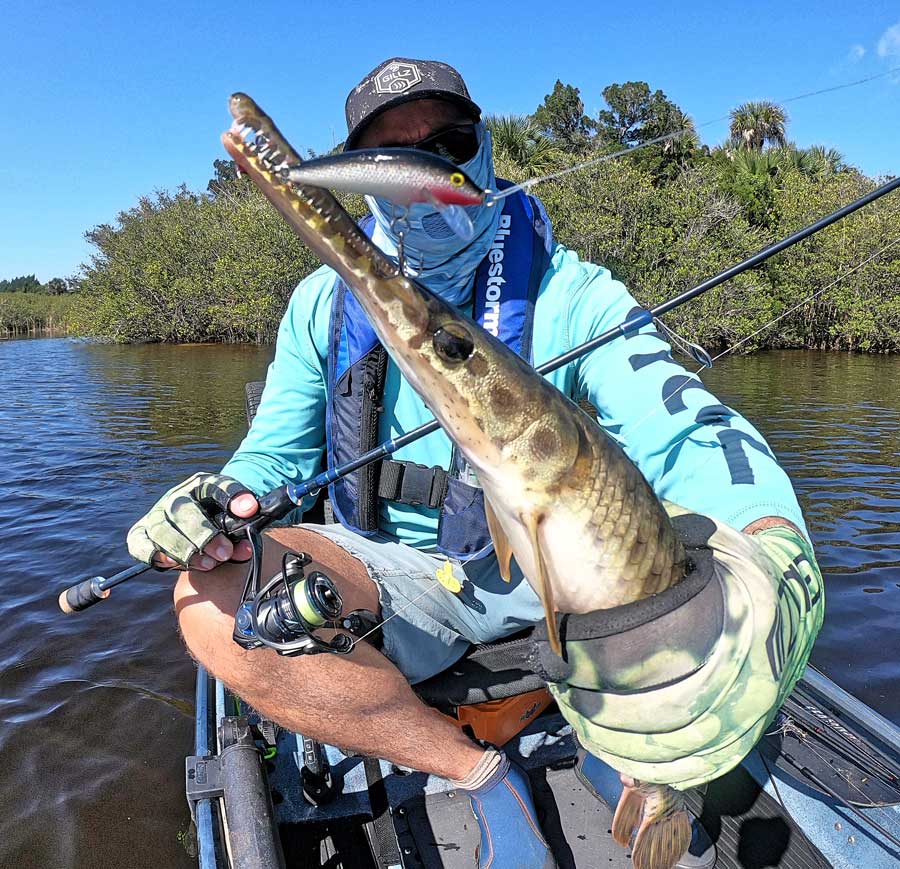
First, let’s clear up a common misconception. There are no alligator gar in central Florida. Biologists estimate there could be less than a thousand alligator gar in the entire state, and all those are found in a few rivers in the Panhandle. Alligator gar are so rare that fishing for them is illegal in Florida.
According to John Knight, biologists for the Florida Fish and Wildlife Conservation Commission, there are two gar species in Central Florida, the Florida gar and longnose gar. Florida gar have a broader snout and stockier body looking much like a miniature alligator gar. Miniature is a key word as Florida gar don’t grow that big. A particularly large specimen may approach three feet long and the state record weighed 9.44 pounds.
As you would expect from their name, longnose gar have a long, slender snout and a body to match. They don’t approach the gargantuan dimensions of an alligator gar, but they still grow to impressive sizes. A trophy longnose can top five feet in length. The Florida record is 41 pounds caught in Lake Panasoffkee.
Longnose gar are ambush predators. They tend to lounge almost motionless just under the surface where they use their long jaws lined with needle teeth to quickly snap up any unfortunate baitfish that wanders too close. Longnose gar’s tendency to laze near the surface and roll like tarpon makes them prime targets for sight fishing. They readily strike lures, although they generally won’t chase down fast moving baits. Use baits that can be fished slowly at, or just below the surface. Work the lure past the eye of the gar and a subtle twitch or two is usually all that is needed to elicit a strike.

There is a unique, hookless lure that works well on gar that is made from about a four inch length of nylon rope. Melt or bind one end of the rope where you will tie your fishing line, and then use a comb or other tool to fray out the strands. The rope lure has a seductive wiggle in the water. When a gar strikes, don’t set the hook, just tighten up and the rope strands will tangle up in the teeth and ensnare the gar. Don’t use the rope lure on light line because if you break off a gar it can’t free itself from the rope and will likely die of starvation.
Longnose gar can certainly be caught on a live, dead or chunks of baitfish. It is usually best to suspend the bait below a bobber within couple feet of the surface. Terminal tackle doesn’t need to be complex. Wire leaders are not required. Gar’s teeth are like needles without cutting edges like a barracuda or mackerel. A couple feet of 30 or 40 pound test monofilament leader is sufficient or you can tie similar strength braids straight to the hooks. Speaking of hooks, small single hooks, like a 1/0 Daiichi D73Z are all you need, even for the biggest longnose gar.


Leave A Comment
You must be logged in to post a comment.